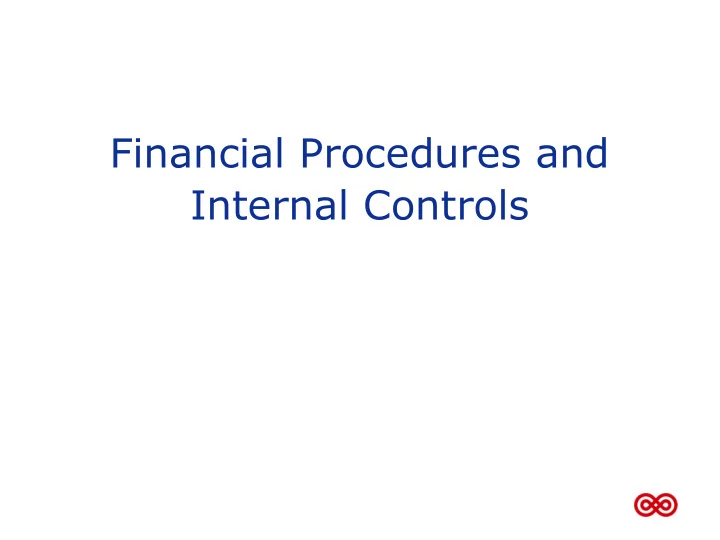

Financial Procedures and Internal Controls
Internal controls Why is this so important?
Internal control – why is this so important? • Create valuable information on to the leadership on financial matters – informed decision making • Defines measurements of success • Strengthen value of external reporting through its reputation • Accountability • Internal: Board/Secretary General/employees • External: ZNCDA/donors/member/beneficiaries/governmental institutions • Secure trust of donors, partners and beneficiaries • Minimize the risks of: • Errors • Fraud • Corruption
What are the characteristics of organisations with strong internal controls • Strong information system: Ø Complete reporting Ø Timely reporting Ø Relevant Ø Understandable Ø True and fair Ø Etc. • Transparent procedures • Segregation of duties • Sufficient skills • Clear roles and responsibilities • Quick and timely response to challenges and problems • Order
Internal control tools • Proactive controls • Limitations (physical barriers, user settings etc.) • Segregation of duties • Acquire and maintain sufficient skills • Reactionary controls • Reporting • Approvals • Documentation of decisions and accountabilities • Internal and external auditing • Supervision
Pointers on internal control • The risk of fraud is always there • The possible cost of fraud should be limited • Errors and fraud should be revealed as fast as possible • Balanced control level – make risk analysis • Evaluate cost of control against cost of fraud and errors • Control levels in relation to risk • Think trust vs. control vs. bureaucracy
Fraud Theory and reports
ACFE – observed behavioral red flags in fraud cases
KPMG’s profile of a fraudster • Survey done i 2007 • Based on 360 cases from Europe, Middle East and Africa • The typical fraudster: • A member of the leadership • Often connected to the financial department • Exploits knowledge of the internal controls • Drived by opportunity of personal gain • Works alone in the fraudulent activities • Has been doing it for more than 6 months
ACFE report – behavioral red flags
Control weaknesses
Tools of a fraud • Forgery of documents and accountabilities • Witholding information and registration of transactions • Giving misinformation to management and auditor
Recommend
More recommend